Deborah Swift's Blog, page 43
September 24, 2012
Frances Garrood marooned - Desert Island Books
Today I am at Passages to the Past with my guest post on artists who inspired me when writing THE GILDED LILY. You can also find my post on old London Bridge at Hoyden's and Firebrands, and a Giveaway and extract at Dizzy C's Little Book Blog.
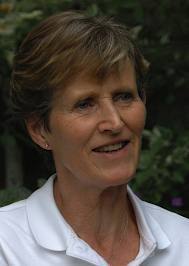
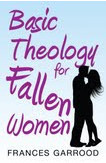
Today Frances Garrood is minding my Desert Island. Frances is up for this challenge as she has been corresponding with a prisoner on Indiana's Death Row. She says, "This is both interesting and rewarding. Most of the prisoners on Americ'a Death Row are poor (mine has difficulty finding enough money for stamps in order to write to me), and they are kept there for years. My pen friend has been in prison for just over a year, and his appeal - which will take at least eight years - hasn't yet started. The system is exceptionally cruel, and writing to a prisoner is one way of doing something about it (if you are interested, do contact Frances via her blog for details. New correspondents are always needed).
Frances has written many stories for magazines and three novels. Basic Theology for Fallen Women is her latest.
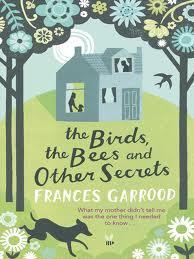
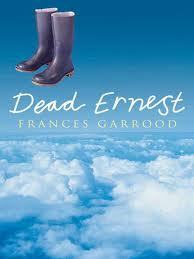
Her are Frances's choices:
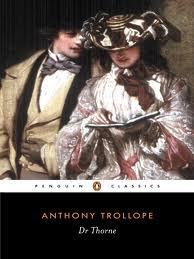
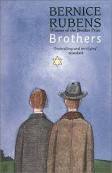 So - Classic would be Anthony Trollope's Dr. Thorne, because I love Trollope and this is my favourite. It is amusing, romantic, and very, very English. In fact, English writing at its best.
So - Classic would be Anthony Trollope's Dr. Thorne, because I love Trollope and this is my favourite. It is amusing, romantic, and very, very English. In fact, English writing at its best.
Modern novel: Brothers, by Bernice Rubens. This disturbing novel charts the history of pairs of Jewish brothers, through several generations. It it beautifully written, but tragic (inevitably), and a gripping tale of love, courage, suffering and loss. It will remind me how fortunate those of us are who have not had to suffer the way the Jews have, and perhaps also make being marooned a little more bearable!
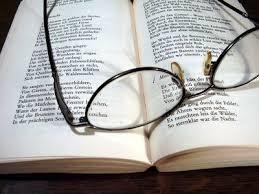
Non-fiction: a huge book of poetry, from the time of Shakespeare up until the present. I don't know enough poetry, and I could spend time getting to know more, and learning favourites by heart. That should keep me occupied until I'm rescued. Or not.
Deborah's note - the picture is from EHow. If you click on it it will take you to a link which tells you how to put together your own Poetry Anthology. That would keep you busy Frances!



Today Frances Garrood is minding my Desert Island. Frances is up for this challenge as she has been corresponding with a prisoner on Indiana's Death Row. She says, "This is both interesting and rewarding. Most of the prisoners on Americ'a Death Row are poor (mine has difficulty finding enough money for stamps in order to write to me), and they are kept there for years. My pen friend has been in prison for just over a year, and his appeal - which will take at least eight years - hasn't yet started. The system is exceptionally cruel, and writing to a prisoner is one way of doing something about it (if you are interested, do contact Frances via her blog for details. New correspondents are always needed).
Frances has written many stories for magazines and three novels. Basic Theology for Fallen Women is her latest.


Her are Frances's choices:

 So - Classic would be Anthony Trollope's Dr. Thorne, because I love Trollope and this is my favourite. It is amusing, romantic, and very, very English. In fact, English writing at its best.
So - Classic would be Anthony Trollope's Dr. Thorne, because I love Trollope and this is my favourite. It is amusing, romantic, and very, very English. In fact, English writing at its best.Modern novel: Brothers, by Bernice Rubens. This disturbing novel charts the history of pairs of Jewish brothers, through several generations. It it beautifully written, but tragic (inevitably), and a gripping tale of love, courage, suffering and loss. It will remind me how fortunate those of us are who have not had to suffer the way the Jews have, and perhaps also make being marooned a little more bearable!

Non-fiction: a huge book of poetry, from the time of Shakespeare up until the present. I don't know enough poetry, and I could spend time getting to know more, and learning favourites by heart. That should keep me occupied until I'm rescued. Or not.
Deborah's note - the picture is from EHow. If you click on it it will take you to a link which tells you how to put together your own Poetry Anthology. That would keep you busy Frances!
Published on September 24, 2012 02:09
September 21, 2012
Romantic comedy author Rhoda Baxter's Desert Island Books
Today I am giving away a book at Let Them Read Books, and guesting at Historical Tapestry.My blog is uninhabited again so I've asked another author to hold the fort whilst I'm gone.
For my Desert Island Books post today I welcome author of smart romantic comedy, Rhoda Baxter.
Rhoda is a former scientist who now works with intellectual property. Years ago, when she commuted into London every day, she read a lot. Now she writes the sort of books she wanted to read.
 [image error]
[image error]
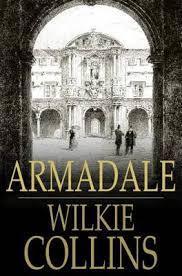 The classic: Armadale by Wilkie Collins. There are some wonderful twists and turns in this book and each 'installment' has a cliff hanger ending (it was originally a serial, so you can feel the installments like a pulse through the book). It also has a wonderful villainess in it.
The classic: Armadale by Wilkie Collins. There are some wonderful twists and turns in this book and each 'installment' has a cliff hanger ending (it was originally a serial, so you can feel the installments like a pulse through the book). It also has a wonderful villainess in it.
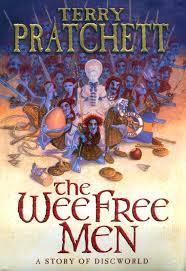 The contemporary: The Wee Free Men by Terry Pratchett. This book makes me laugh every time I read it. I think it would cheer me up immensely if I was all alone on a Desert Island.
The contemporary: The Wee Free Men by Terry Pratchett. This book makes me laugh every time I read it. I think it would cheer me up immensely if I was all alone on a Desert Island.
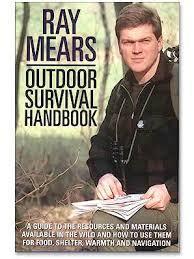 The non fiction: I'd have to take one of Ray Mears' survival guides. Not exciting, but very practical.
The non fiction: I'd have to take one of Ray Mears' survival guides. Not exciting, but very practical.
I can see that Rhoda will first terrify herself with the Wilkie Collins, then laugh herself silly with the Terry Pratchett - before getting to grips with the very serious-looking Ray Mears. Guess she'll be needing a bit of Post Traumatic Stress treatment when they finally rescue her.You can find more about Rhoda on her website www.rhodabaxter.com, or find her on Twitter (@rhodabaxter), Facebook or Goodreads. Her books are also available for Kobo and other eReaders
For my Desert Island Books post today I welcome author of smart romantic comedy, Rhoda Baxter.
Rhoda is a former scientist who now works with intellectual property. Years ago, when she commuted into London every day, she read a lot. Now she writes the sort of books she wanted to read.
 [image error]
[image error]
 The classic: Armadale by Wilkie Collins. There are some wonderful twists and turns in this book and each 'installment' has a cliff hanger ending (it was originally a serial, so you can feel the installments like a pulse through the book). It also has a wonderful villainess in it.
The classic: Armadale by Wilkie Collins. There are some wonderful twists and turns in this book and each 'installment' has a cliff hanger ending (it was originally a serial, so you can feel the installments like a pulse through the book). It also has a wonderful villainess in it.  The contemporary: The Wee Free Men by Terry Pratchett. This book makes me laugh every time I read it. I think it would cheer me up immensely if I was all alone on a Desert Island.
The contemporary: The Wee Free Men by Terry Pratchett. This book makes me laugh every time I read it. I think it would cheer me up immensely if I was all alone on a Desert Island.  The non fiction: I'd have to take one of Ray Mears' survival guides. Not exciting, but very practical.
The non fiction: I'd have to take one of Ray Mears' survival guides. Not exciting, but very practical. I can see that Rhoda will first terrify herself with the Wilkie Collins, then laugh herself silly with the Terry Pratchett - before getting to grips with the very serious-looking Ray Mears. Guess she'll be needing a bit of Post Traumatic Stress treatment when they finally rescue her.You can find more about Rhoda on her website www.rhodabaxter.com, or find her on Twitter (@rhodabaxter), Facebook or Goodreads. Her books are also available for Kobo and other eReaders
Published on September 21, 2012 04:38
September 20, 2012
Encyclopaedias keep novelist and Desert Island Guest Kate Forsyth busy
Today I am guesting at Historical Tapestry and my Desert Island Guest today is the fabulous Kate Forsyth.
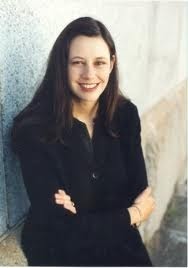 I came across Kate when she was kind enough to review The Lady's Slipperon her website (here)
I came across Kate when she was kind enough to review The Lady's Slipperon her website (here)
Kate Forsyth is the bestselling and award-winning author of more than twenty books, ranging from picture books to poetry to novels for both children and adults.
Her most recent book for adults is Bitter Greens, a retelling of the Rapunzel fairytale interwoven with the dramatic, true life story of the woman who first told the tale, the 17th century French writer, Charlotte-Rose de la Force.
Her most recent book for children is The Starkin Crown, a heroic fantasy adventure set in the magical world of Estelliana, a place of wild magic and terrifying monsters.
Kate's The Witches of Eileanan was named a Best First Novel of 1998 by Locus Magazine and her books have been published in 14 countries around the world, including the UK, the US, Russia, Germany, Japan, Turkey, Spain, Italy, Poland and Slovenia. She is currently undertaking a doctorate in fairytale retellings at the University of Technology, having already completed a BA in Literature and a MA in Creative Writing.
Kate is a direct descendant of Charlotte Waring, the author of the first book for children ever published in Australia, A Mother's Offering to her Children. She lives by the sea in Sydney, Australia, with her husband, three children, a rambunctious Rhodesian Ridgeback, a bad-tempered black cat, and many thousands of books.
Here are Kate's choices for survival on my Desert Island. Wow, those Encyclopaedias will take some reading through. I had a similar set as a child, full of pictures of antiquated diving bells, blurry comets and zoo animals.
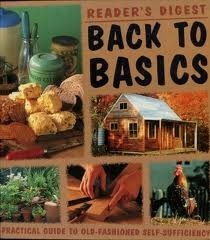
“Back to Basics: A practical Guide to Old-Fashioned Self-sufficiency” – I’ve had it for years, but its packed full of information on things like creating energy from water, making yourself a loom, or baskets, or clay pots, and milking goats and keeping chickens. Since I don’t know how to do anything like that, I’m sure it’ll come in useful.
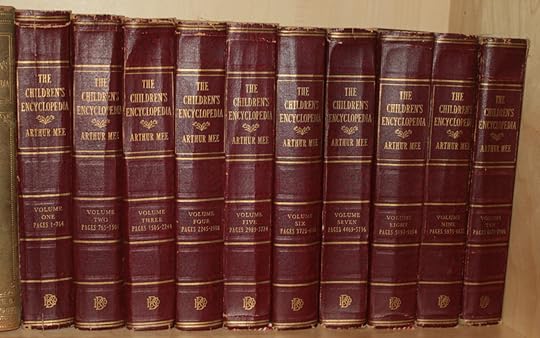
The World of Wonder Children’s Encyclopedia – my favourite when I was a child. It’s packed full of fascinating articles on history, science, geography and so on – lots of happy browsing there.
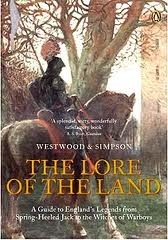
‘The Lore of the Land: A Guide to England’s Legends from Spring-heeled Jack to the Witches of Warboys’ by Jennifer Westwood and Jacqueline Simpson – I’d choose this book because its enormously thick and enormously interesting, and full of tales and titbits. I could read one a day and still not have finished by the time I was rescued.
Kate's book, Bitter Greens is out now in paper and e-book.
You can read a great interview with her here
Find out more on her official website.
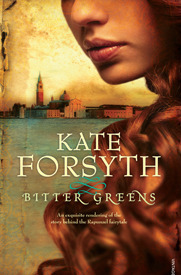

 I came across Kate when she was kind enough to review The Lady's Slipperon her website (here)
I came across Kate when she was kind enough to review The Lady's Slipperon her website (here)Kate Forsyth is the bestselling and award-winning author of more than twenty books, ranging from picture books to poetry to novels for both children and adults.
Her most recent book for adults is Bitter Greens, a retelling of the Rapunzel fairytale interwoven with the dramatic, true life story of the woman who first told the tale, the 17th century French writer, Charlotte-Rose de la Force.
Her most recent book for children is The Starkin Crown, a heroic fantasy adventure set in the magical world of Estelliana, a place of wild magic and terrifying monsters.
Kate's The Witches of Eileanan was named a Best First Novel of 1998 by Locus Magazine and her books have been published in 14 countries around the world, including the UK, the US, Russia, Germany, Japan, Turkey, Spain, Italy, Poland and Slovenia. She is currently undertaking a doctorate in fairytale retellings at the University of Technology, having already completed a BA in Literature and a MA in Creative Writing.
Kate is a direct descendant of Charlotte Waring, the author of the first book for children ever published in Australia, A Mother's Offering to her Children. She lives by the sea in Sydney, Australia, with her husband, three children, a rambunctious Rhodesian Ridgeback, a bad-tempered black cat, and many thousands of books.
Here are Kate's choices for survival on my Desert Island. Wow, those Encyclopaedias will take some reading through. I had a similar set as a child, full of pictures of antiquated diving bells, blurry comets and zoo animals.

“Back to Basics: A practical Guide to Old-Fashioned Self-sufficiency” – I’ve had it for years, but its packed full of information on things like creating energy from water, making yourself a loom, or baskets, or clay pots, and milking goats and keeping chickens. Since I don’t know how to do anything like that, I’m sure it’ll come in useful.

The World of Wonder Children’s Encyclopedia – my favourite when I was a child. It’s packed full of fascinating articles on history, science, geography and so on – lots of happy browsing there.

‘The Lore of the Land: A Guide to England’s Legends from Spring-heeled Jack to the Witches of Warboys’ by Jennifer Westwood and Jacqueline Simpson – I’d choose this book because its enormously thick and enormously interesting, and full of tales and titbits. I could read one a day and still not have finished by the time I was rescued.
Kate's book, Bitter Greens is out now in paper and e-book.
You can read a great interview with her here
Find out more on her official website.

Published on September 20, 2012 03:55
September 19, 2012
Desert Island Books with Award Winning Romantic Novelist Charlotte Betts
Today The Gilded Lily is being reviewed at Let Them Read Books and at The True Book Addict, where I have also written a guest Post on The Temptation of the Restoration.
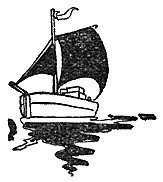
While I am away, please welcome award-winning Romantic Novelist Charlotte Betts to my Desert Island.It's getting quite crowded on here with novelists all scribbling away!Always a bookworm, Charlotte discovered her passion for writing after her three children and two step-children had grown up . The Apothecary’s Daughter, a historical novel, was published in the summer of 2011 after winning an award with You-Write-On and a publishing deal with Piatkus, and her second, The Painter's Apprentice has just come out.
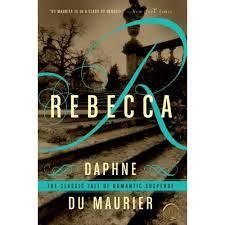
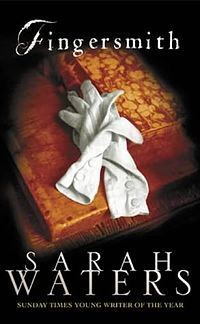
Classic Choice - Rebecca by Daphne du Maurier
No matter how many times I read Rebecca, I never fail to shiver at the suspense and brooding sense of menace. A young bride is haunted by the legacy of lies and deceit left by her husband’s beautiful first wife. Perfect reading for a Cornish holiday!
Contemporary Choice - Fingersmith by Sarah Waters
A contemporary novel but set in 1862, Waters creates a rich, Dickensian world full of wonderful characters. This is a densely plotted tale of love and betrayal with as many twists and turns as a Victorian alleyway.
Non Fiction Choice – The History of Architecture on the Comparative Method by Bannister Fletcher
My edition is from 1938, bound in red leather and gilt with marbleised end papers. It’s an invaluable resource for checking architectural facts for writing historical novels but also full of endlessly fascinating illustrations.

http://architecture.dept.shef.ac.uk/ssoa_news/?p=117
The Painter’s Apprentice by Charlotte Betts
As the Glorious Revolution of 1688 throws Britain into turmoil, can Beth Ambrose find the courage to follow her heart, defend all she holds dear and change the course of history for good? The Painter’s Apprentice is the sequel to award-winning The Apothecary’s Daughter.
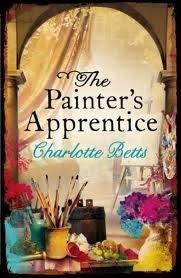
Thanks for sharing your choices, Charlotte, hope you are rescued soon.

While I am away, please welcome award-winning Romantic Novelist Charlotte Betts to my Desert Island.It's getting quite crowded on here with novelists all scribbling away!Always a bookworm, Charlotte discovered her passion for writing after her three children and two step-children had grown up . The Apothecary’s Daughter, a historical novel, was published in the summer of 2011 after winning an award with You-Write-On and a publishing deal with Piatkus, and her second, The Painter's Apprentice has just come out.


Classic Choice - Rebecca by Daphne du Maurier
No matter how many times I read Rebecca, I never fail to shiver at the suspense and brooding sense of menace. A young bride is haunted by the legacy of lies and deceit left by her husband’s beautiful first wife. Perfect reading for a Cornish holiday!
Contemporary Choice - Fingersmith by Sarah Waters
A contemporary novel but set in 1862, Waters creates a rich, Dickensian world full of wonderful characters. This is a densely plotted tale of love and betrayal with as many twists and turns as a Victorian alleyway.
Non Fiction Choice – The History of Architecture on the Comparative Method by Bannister Fletcher
My edition is from 1938, bound in red leather and gilt with marbleised end papers. It’s an invaluable resource for checking architectural facts for writing historical novels but also full of endlessly fascinating illustrations.

http://architecture.dept.shef.ac.uk/ssoa_news/?p=117
The Painter’s Apprentice by Charlotte Betts
As the Glorious Revolution of 1688 throws Britain into turmoil, can Beth Ambrose find the courage to follow her heart, defend all she holds dear and change the course of history for good? The Painter’s Apprentice is the sequel to award-winning The Apothecary’s Daughter.

Thanks for sharing your choices, Charlotte, hope you are rescued soon.
Published on September 19, 2012 03:40
September 18, 2012
Desert Island Books - Choices from Timeslip novelist Alis Hawkins
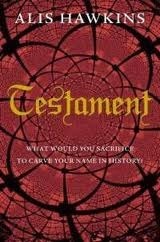
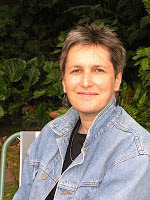
Today I am a guest with Radio Lancashire on the Sally Naden Morning Show, and also visiting Historical Tapestry where they are reviewing The Gilded Lily. Whilst I am away, I am delighted to welcome playwright and novelist Alis Hawkins.
 A desert island might be a bit of a shock for Alis as she spent an idyllic childhood on a dairy farm in West Wales, before going on to read English at Oxford. No lofty spires on this desert island, only waving palms. Alis then went on to train as a speech and language therapist, which could come in handy if the island proves to be inhabited. She now works part time as a specialist in autism spectrum conditions and spends the rest of her time writing plays or novels.
A desert island might be a bit of a shock for Alis as she spent an idyllic childhood on a dairy farm in West Wales, before going on to read English at Oxford. No lofty spires on this desert island, only waving palms. Alis then went on to train as a speech and language therapist, which could come in handy if the island proves to be inhabited. She now works part time as a specialist in autism spectrum conditions and spends the rest of her time writing plays or novels.Her first novel, a time-slip novel set in the great age of Cathedral-building, Testament, was published to acclaim in 2008. She wrote and directed a promenade play for Rochester cathedral in 2009, and as part of the Dickens bicentenary celebrations Rochester Cathedral commissioned her to write another Dickens- themed play to be performed in the Cathedral garth in June this year, which was also a great success.

Pride and Prejudice because it always makes me laugh and I suspect I shall need some laughs on the desert island - and because it's longstanding proof that you can write a genre novel (because what is it but a classic ' boy meets girl, girl hates boy, girl falls in love with reformed boy' love story) whilst, at the same time writing a literary classic!
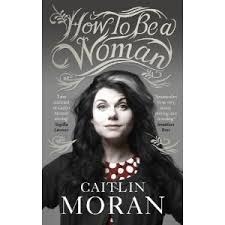
Caitlin Moran's How to be a Woman because it's flayingly honest (which I always both like and admire) whilst being kind and killingly, knicker-threateningly amusing (see comments on the need for laughs above).
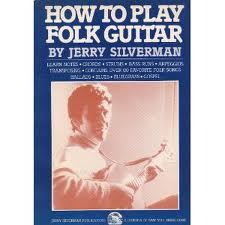
How to Play Folk Guitar. OK it's not a self-help book as such but it'll help me not to feel I'm completely missing out on the island. But you will, in time-honoured fashion, have to let me have the luxury of taking a guitar as well!
Thanks Alis, you might have to make your own guitar out of bamboo and shredded leaves!
Testament is available in hardback, paperback and e-book.
Blurb: When Damia Miller is employed to promote revered Kineton and Dacre college, it doesn’t take her long to recognise that a grotesque antique painting recently uncovered on one of the college’s walls might hold the key to the college’s future. Six hundred years earlier, master mason Simon of Kineton is preparing plans for his magnum opus, a college to rival anything in England. His work only interrupted when he becomes father to the son he has longed for for twenty years. In the present day, Damia grows increasingly obsessed with the mysterious wall-painting and the college’s dark history. What is the painting trying to tell her? Why was the college named after its mason as well as its founder? And who does the statue of the carefree boy in the Toby Yard represent? In mediaeval Salster, Simon of Kinnerton is struggling to come to terms with the fact that his son is disabled – cursed, in the eyes of many of Salster’s townspeople. But just as Simon himself is coming to accept young Toby a tragedy occurs whose repercussions will echo until the present day. Testament is a startling feat of imaginative skill, distinguished by the breadth of its vision, and by the heartbreaking story at its centre: that of the sacrifice a child made for his father, six hundred years ago.
Published on September 18, 2012 07:19
September 17, 2012
Author Debra Brown is Castaway on a Desert Island

Debra Brown is a romantic and a lover of history.
She is the organiser of English Historical Fiction Authors well-respected blog, and the facebook group associated with it. Debra works tirelessly to promote historical fiction in all its genres. If you go there today you will see she is hosting a Giveaway of THE GILDED LILY. I am also at Tanzanite's Castle today.
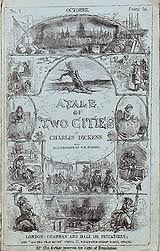 Debra loves to read books and watch films where 'We can enter a world of wearing beautiful gowns each night to the dinner table and be served by butlers and dashing footmen. A world of polite conversation at balls and of gentlemen who do not turn their backs to a lady until he has excused himself from a conversation.'
Debra loves to read books and watch films where 'We can enter a world of wearing beautiful gowns each night to the dinner table and be served by butlers and dashing footmen. A world of polite conversation at balls and of gentlemen who do not turn their backs to a lady until he has excused himself from a conversation.'It seems a shame to consign this woman of indefatigable energy to my Desert Island, but sorry Debra, I've taken the boat.
Here are Debra Brown's Desert Island choices.
A Tale of Two Cities ~ I have actually never read it yet, and it is the bestseller in historical fiction.
For her second book, Debra asked me, "Does it have to be a novel? Because I am really hooked on The Schwarzbein Principle and The Schwarzbein Principle II right now and would love it if others had some exposure to it. If that is ok, here is why I like it."
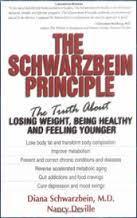 It's a Desert Island, right. I thought I should be generous and allow Debra her choice. Go ahead Debra...
It's a Desert Island, right. I thought I should be generous and allow Debra her choice. Go ahead Debra...We've all had so many different diets to try for health and weight issues, but we still struggle with weight and aging illnesses like Type II Diabetes and many others. These books, written by a diabetes doctor, start with how the diet and medication normally prescribed by doctors was making people fatter, sicker and more miserable. Her patients were asking for something different, something that would help.
She started working with them, asking them to try writing down everything they ate and medications, as well as their responses to such. She then asked them to cut back to smaller portions of balanced meals, five times a day. The books describe how that affects the body's insulin- which in turn affects the other hormones and neurotransmitters, etc.
As her patients applied what she had learned, she saw them become healthier and more youthful looking, including weight loss or gain as needed, while eating an abundance of good food throughout the day. One interesting point that has brightened my diet is that fats do not put weight on a person. To store fat, insulin is required- a person must have an insulin response and that can come only from eating carbohydrates. So the key is to balance the proportions of the foods- enough carbs to make some insulin, but not too much, and always with vegetable fiber, fats and protein.
My first personal experience with results is a funny story. As an author, my vision is of great importance (as for everyone). I got new prescription glasses in June, but my vision seemed to get worse and worse, on and off, quickly. One evening I picked up my Schwartzbein book and could barely read it. I thought I must be going blind. I knew, though, on the Schwartzbein diet, that it was time for me to eat. I ate my small balanced meal and sat back down to read- lo and behold, my vision was clear. Since then, I have kept my vision pretty clear by eating on time.
I'm sure the Desert Island will be filled with nutritious fruits and then there will always be fish!
Here is Debra's Victorian novel, The Companion of Lady Holmeshire which I hope makes her a nice companion during her stay.
Thanks for looking after my Island for the day, Debra.
Debra's blog is at www.authordebrabrown.blogspot.com
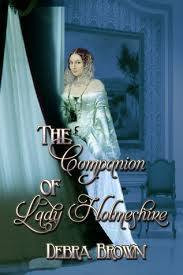
Published on September 17, 2012 04:34
September 14, 2012
Woman Friday, Desert Island Castaway - Anita Seymour
Today I'm at Peeking Between the Pages Blog where Darlene is reviewing The Gilded Lily.
Whilst I am off on my blog tour my Desert Island Guest for today is Anita Seymour, historical novelist and another fan of the 17th century.

Anita says on her website:
"The realities of everyday habits shape the actions of my characters, but although restricting, these are the details I find fascinating – for instance how long it took to travel between London and Exeter in a box coach without suspension, and where accidents were frequent on ill-made up roads that in parts became knee deep in mud during winter rain. In fact I find the research is the most exciting part and less arduous than actually writing the story. If I cannot obtain a definitive answer from more than one source, I leave it out. This can sometimes constrain my plot choices, but it’s all part of the challenge of writing a credible as well as an exciting story.
 Getting inside my character’s heads is also vital. In the 17th Century, attitudes were very different to today. Education was not available to everyone, and we now disapprove of prejudice, chauvinism and religious fanaticism, but in the 1640’s, views were very different. My characters have to be true to their own time, I have to allow them to hold views we would dismiss now. Maybe they are bigoted, politically backwards and administer whippings to their misbehaving children – even their wife! I cannot pass judgment on them, or apologize for their beliefs. Not everyone was a free thinker ahead of their time.
Getting inside my character’s heads is also vital. In the 17th Century, attitudes were very different to today. Education was not available to everyone, and we now disapprove of prejudice, chauvinism and religious fanaticism, but in the 1640’s, views were very different. My characters have to be true to their own time, I have to allow them to hold views we would dismiss now. Maybe they are bigoted, politically backwards and administer whippings to their misbehaving children – even their wife! I cannot pass judgment on them, or apologize for their beliefs. Not everyone was a free thinker ahead of their time.
Writing historical fiction is complicated and challenging, but my spirit lives in the past and I cannot imagine myself writing anything else."
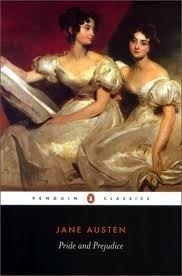
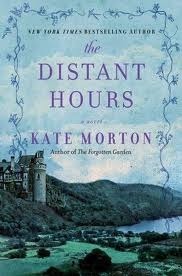
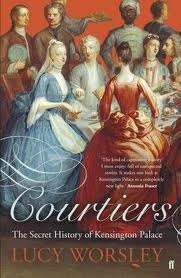
Here are Anita's choices:
"The Classic has got to be Jane Austen's Pride and Prejudice - it's the best romantic love story ever written and can stand being read repeatedly with no loss of interest.
The Contemporary: The Distant Hours by Kate Morton - her narrative is so detailed, I enjoyed it the first time, but also sure I will find more in it on a second, third and fourth reading
The Non-Fiction: Courtiers: The Secret History of the Georgian Court by Lucy Worsley - so by the time I am rescued I will be an expert on the early Georgian court and thus writing my next biographic novel will be easy.
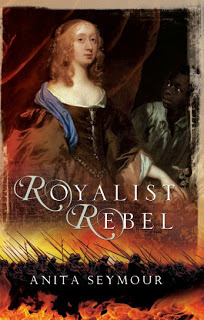
Royalist Rebel looks wonderful and is coming soon from Pen and Sword. For details of her other books, check out Anita's Blog: http://thedisorganisedauthor.blogspot.com
Anita also writes as Anita Davison, Trencarrow Secret and her other books can be found here
Whilst I am off on my blog tour my Desert Island Guest for today is Anita Seymour, historical novelist and another fan of the 17th century.

Anita says on her website:
"The realities of everyday habits shape the actions of my characters, but although restricting, these are the details I find fascinating – for instance how long it took to travel between London and Exeter in a box coach without suspension, and where accidents were frequent on ill-made up roads that in parts became knee deep in mud during winter rain. In fact I find the research is the most exciting part and less arduous than actually writing the story. If I cannot obtain a definitive answer from more than one source, I leave it out. This can sometimes constrain my plot choices, but it’s all part of the challenge of writing a credible as well as an exciting story.
 Getting inside my character’s heads is also vital. In the 17th Century, attitudes were very different to today. Education was not available to everyone, and we now disapprove of prejudice, chauvinism and religious fanaticism, but in the 1640’s, views were very different. My characters have to be true to their own time, I have to allow them to hold views we would dismiss now. Maybe they are bigoted, politically backwards and administer whippings to their misbehaving children – even their wife! I cannot pass judgment on them, or apologize for their beliefs. Not everyone was a free thinker ahead of their time.
Getting inside my character’s heads is also vital. In the 17th Century, attitudes were very different to today. Education was not available to everyone, and we now disapprove of prejudice, chauvinism and religious fanaticism, but in the 1640’s, views were very different. My characters have to be true to their own time, I have to allow them to hold views we would dismiss now. Maybe they are bigoted, politically backwards and administer whippings to their misbehaving children – even their wife! I cannot pass judgment on them, or apologize for their beliefs. Not everyone was a free thinker ahead of their time.Writing historical fiction is complicated and challenging, but my spirit lives in the past and I cannot imagine myself writing anything else."



Here are Anita's choices:
"The Classic has got to be Jane Austen's Pride and Prejudice - it's the best romantic love story ever written and can stand being read repeatedly with no loss of interest.
The Contemporary: The Distant Hours by Kate Morton - her narrative is so detailed, I enjoyed it the first time, but also sure I will find more in it on a second, third and fourth reading
The Non-Fiction: Courtiers: The Secret History of the Georgian Court by Lucy Worsley - so by the time I am rescued I will be an expert on the early Georgian court and thus writing my next biographic novel will be easy.

Royalist Rebel looks wonderful and is coming soon from Pen and Sword. For details of her other books, check out Anita's Blog: http://thedisorganisedauthor.blogspot.com
Anita also writes as Anita Davison, Trencarrow Secret and her other books can be found here
Published on September 14, 2012 02:06
September 13, 2012
Desert Island Books - Castaway Ann Weisgarber
 I'm going off to tour the blogosphere and while I'm away I've invited a few other authors to my Deserted Blog. Whilst they are here they'll share their Desert Island Books.Needless to say I'm a big fan of the Radio 4 show, Desert Island Discs.
I'm going off to tour the blogosphere and while I'm away I've invited a few other authors to my Deserted Blog. Whilst they are here they'll share their Desert Island Books.Needless to say I'm a big fan of the Radio 4 show, Desert Island Discs.Ann Weisgarber is my Castaway today.
Ann was born and raised in Kettering, Ohio, a suburb of Dayton. After graduating from Wright State University with a Bachelor of Arts in Social Work, she was a social worker in a psychiatric hospital. She moved to Houston and attended the University of Houston where she earned a Masters of Arts in Sociology. She taught sociology at several community colleges in the Houston area.
In addition to Ohio and Texas, Ann has lived in Cambridge, Massachusetts, and in Des Moines, Iowa. She now splits her time between Sugar Land, Texas, and Galveston, Texas. She and her husband, Rob, are admirers of America's national parks and try to visit a park each year. Ann's next novel, The Promise, will be released in England, March 2013. It is the story of a marriage during the 1900 Galveston, Texas, hurricane.
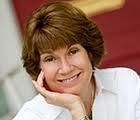 Here is Ann's selection of a classic, a contemporary and a non-fiction book for her stay on my island.
Here is Ann's selection of a classic, a contemporary and a non-fiction book for her stay on my island.Robinson Crusoe by Daniel Defoe. Since I'm on a deserted island, I'll need every survivor tip imaginable. This classic is a good place to begin.
First Edition cover
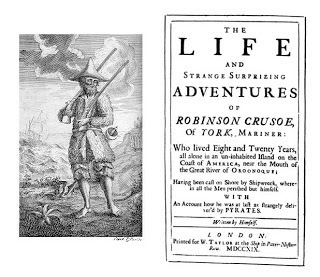
Charlotte's Web by E.B. White. This is a children's book but is my favorite novel. It's not all that contemporary but keeping in mind the deserted island issue, I'll need this story about a spider who saves the day.

Ultimate Visual Dictionary edited by DK Publishing. The illustrations range from how to tie a knot to the Coliseum in Rome. The pictures are so beautiful and detailed that I'll be entertained for years.
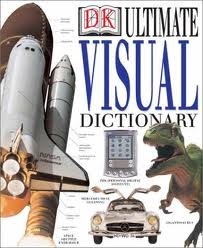
And Ann's new book The Promise is out soon, meanwhile she can enjoy re-reading her own The Personal History of Rachel DuPree, recipient of the Langum Prize for American Historical Fiction for 2010.
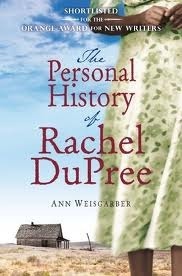 It is 1917 in the South Dakota Badlands, and summer has been hard. Fourteen years have passed since Rachel and Isaac DuPree left Chicago to stake a claim in this unforgiving land. Isaac, a former Buffalo Soldier, is fiercely proud: black families are rare in the West, and black ranchers even rarer. But it hasn't rained in months, the cattle bellow with thirst, and supplies are dwindling. Pregnant, and struggling to feed her family, Rachel is isolated by more than just geography.She is determined to give her surviving children the life they deserve, but she knows that her husband will never leave his ranch: land means a measure of equality with the white man, and Isaac DuPree is not about to give it up just because times are hard. Somehow Rachel must find the strength to do what is right - for her children, for her husband, and for herself. Moving and majestic, "The Personal History of Rachel DuPree" is an unforgettable novel about love and loyalty, homeland and belonging. Above all, it is the story of one woman's courage in the face of the most punishing adversity.
It is 1917 in the South Dakota Badlands, and summer has been hard. Fourteen years have passed since Rachel and Isaac DuPree left Chicago to stake a claim in this unforgiving land. Isaac, a former Buffalo Soldier, is fiercely proud: black families are rare in the West, and black ranchers even rarer. But it hasn't rained in months, the cattle bellow with thirst, and supplies are dwindling. Pregnant, and struggling to feed her family, Rachel is isolated by more than just geography.She is determined to give her surviving children the life they deserve, but she knows that her husband will never leave his ranch: land means a measure of equality with the white man, and Isaac DuPree is not about to give it up just because times are hard. Somehow Rachel must find the strength to do what is right - for her children, for her husband, and for herself. Moving and majestic, "The Personal History of Rachel DuPree" is an unforgettable novel about love and loyalty, homeland and belonging. Above all, it is the story of one woman's courage in the face of the most punishing adversity.
Published on September 13, 2012 03:05
September 12, 2012
Desert Island Books - Castaway Deborah Swift
 I'm going off to tour the blogosphere and while I'm away I've invited a few other authors to my Deserted Blog. Whilst they are here they'll share their Desert Island Books.Needless to say I'm a big fan of the Radio 4 show, Desert Island Discs.
I'm going off to tour the blogosphere and while I'm away I've invited a few other authors to my Deserted Blog. Whilst they are here they'll share their Desert Island Books.Needless to say I'm a big fan of the Radio 4 show, Desert Island Discs.Each author has chosen one classic, one modern and one non-fiction book to take to their Desert Island, along with one of their own books, just to remind them how clever they are!
Before I go off tomorrow, here is my selection:
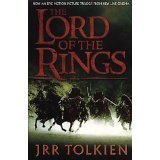 Here's my classic. Why? Because it's long - very long, and I might not be rescued for a very long time! It also has lots of fantasy and material for daydreaming. I might even want to edit it and re-write sections. I can never resist a bit of editing! Also I figured that the landscape of Middle Earth is about as far as I could get from the desert island.
Here's my classic. Why? Because it's long - very long, and I might not be rescued for a very long time! It also has lots of fantasy and material for daydreaming. I might even want to edit it and re-write sections. I can never resist a bit of editing! Also I figured that the landscape of Middle Earth is about as far as I could get from the desert island.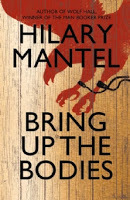
I loved Wolf Hall, but I'm daunted by another the size of this. On my island I'd have plenty of time to really savour Mantel's magnificent writing style.
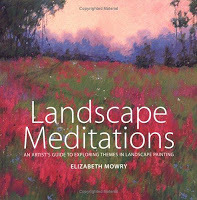 I don't know if I'd have painting things on my island, but I'd certainly want to meditate on nature and my surroundings, and if not I could enjoy the change of view this book would give me.
I don't know if I'd have painting things on my island, but I'd certainly want to meditate on nature and my surroundings, and if not I could enjoy the change of view this book would give me.And of course I would take a large stack of paper to keep writing until someone rescues me! (possibly of course the only thing I might write is SOS in large letters!)
Tomorrow my Desert Island Castaway is Orange-nominated and Langum Prize winner Ann Weisgarber, and I will be at Bippity Boppety Book and Lit Addicted Brit
Published on September 12, 2012 02:34
September 3, 2012
The Art of Moving Pictures - The Gilded Lily
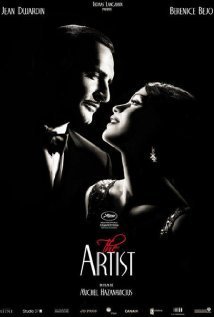
Just last week the french film The Artist came to the Heron Theatre Beetham, and we went down to watch it. A lovely little auditorium, and an intimate space. I know I'm a bit behind the times, way up here in Lancashire, as most people saw it last year, but I loved it. It was so clever and well put-together - a pastiche of silent movies that still managed to be an excellent example of one itself.
And it showed just how powerful a black and white film could be.
So I'm glad that I chose to use only sepia in the book trailer for The Gilded Lily. The trailer was made by my daughter and her friends who are all animation graduates of Staffordshire University. They provided the actors, the voices and the imagery and put it together for me. Unfortunately they didn't have the mega-budget of The Artist, but I still love it and think it reflects the book wonderfully.
The Gilded Lily Book Trailer - Hope you enjoy.
And The Gilded Lily is out on 13th September and available for pre-order in the UK and the US
Published on September 03, 2012 15:41



